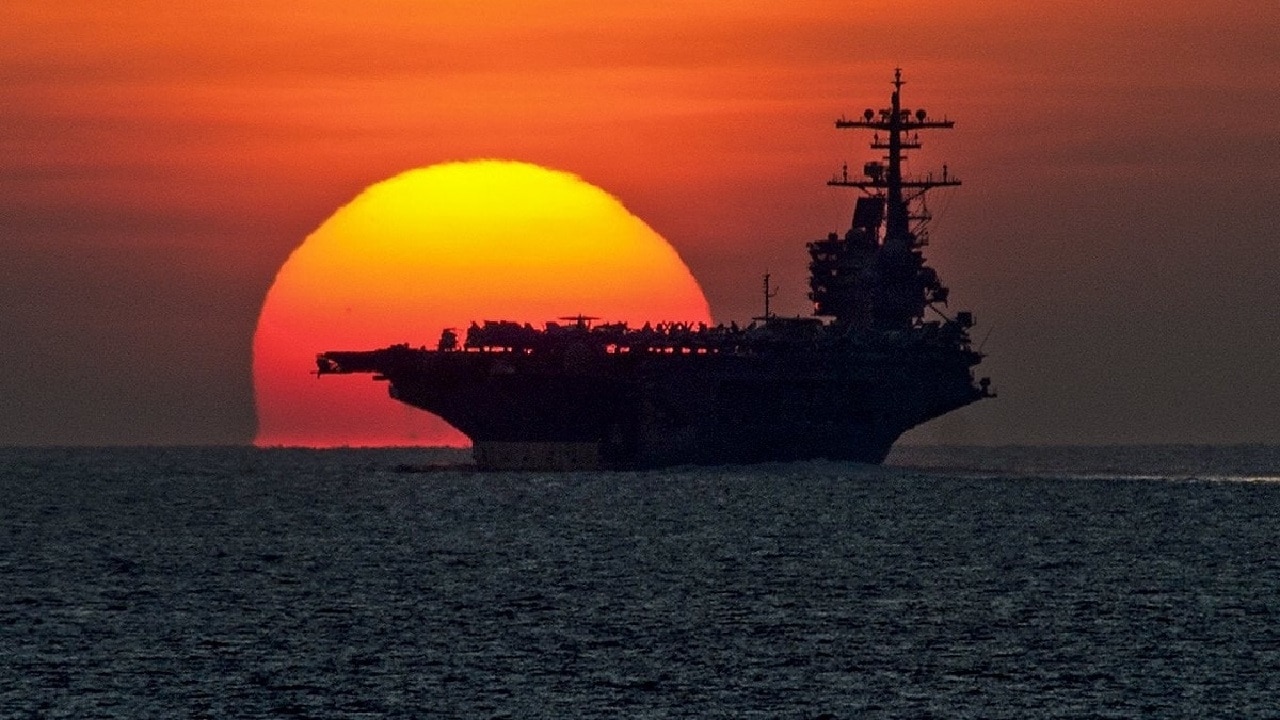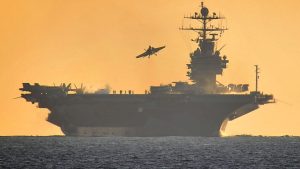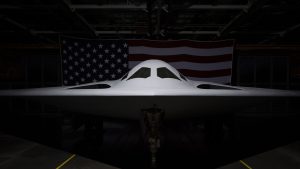There are still active and useful roles for all Nimitz aircraft carriers. All of this is a result of her technologically sophisticated powers at the time.

In light of the tens of millions of dollars invested in the Ford-class aircraft carriers, it is abundantly evident that the Nimitz class, formerly considered the crown jewel of the United States Navy, is clearly on its way to the scrapyard. Yet, despite its age, the Nimitz remains an effective battleship, possibly beyond any other nation’s technological and financial capabilities. All ten Nimitz aircraft carriers are still in service and still relevant. Because she could utilise cutting-edge technology, she maintains her relevance in modern times.
Let’s look at some features that distinguish these aircraft carriers from others.
The Nimitz was the largest warship ever constructed when these aircraft carriers were first introduced. She has a displacement of over 100,000 t and is longer than three football fields (317 metres long with a beam of 40.8 metres, to be exact). The Nimitz’s single propeller has a diameter of 25 feet and weighs more than 30 tonnes by itself, but the ship has four of them. The Nimitz is, without exaggeration, a floating township because of its massive size and the fact that it can accommodate more than 5,000 sailors.
According to the United States Navy, the Nimitz is capable of withstanding three times as much damage as an Essex-class carrier from World War Two. The aeroplane hangars on the Nimitz are separated into three independent fire bays. Each fire bay has strong steel doors meant to prevent fires from spreading from one bay to the next, contributing to Nimitz’s high level of durability.
The Nimitz is equipped with not one but two A4W nuclear reactors, each housed in its distinct compartment. Steam is produced as a byproduct of water heating in nuclear reactors. After that, the steam is routed through the ship’s four turbines, which in turn spin the ship’s four propeller shafts. The end product is a vessel capable of travelling at more than 30 knots and can remain at sea for more than 20 years without refuelling.
The Nimitz is armed to the teeth because she was designed to fight for herself. The Nimitz is equipped with three to four NATO RIM-7 Sea Sparrow missile launchers, which can use for anti-aircraft and anti-shipping purposes. Moreover, the Nimitz is outfitted with three to four 20-mm Phalanx CIWS missile defence cannons. The Nimitz has four Sippican SRBOC (super rapid bloom off-board chaff) launchers and six-barrel MK36 decoy launchers for its defence, which can fire flares and chaff that interfere with the sensors of any approaching missiles. Both an SSTDS torpedo defence system and an AN-SLQ-25 Nixie torpedo countermeasures system are installed on the USS Nimitz as part of its anti-submarine defence capabilities. These carriers can detect and disrupt their adversaries’ radar signals using the AN/SLQ-32(V) system.
The most important question is whether or not any nuclear weapons are stored on the USS Nimitz or any other aircraft carriers. The United States, like Israel, has always maintained a level of nuclear ambiguity about its carrier fleet; the US has never specified whether or not nuclear weapons are carried on its aircraft carriers. But a verbal slip-up that occurred in 2007 provided some interesting insights into the nuclear policy of the United States Navy. According to then-Rear Admiral John Terence Blade, the United States’s policy is that nuclear weapons are not routinely deployed on board the Nimitz. Blade’s statement was not intended to be a denial of anything. And certainly, this remark gives the impression that the Nimitz has carried nuclear weapons at some point.
In the end, though, the primary function of an aircraft carrier is to transport aircraft. (I realise that this is profound.) The number of aircraft these carriers can transport is certain to be between 85 and 90. In addition, the Nimitz can carry as many as 130 F/A-18 Hornets when needed. As a natural consequence, the Nimitz is fully competent at rendering the service that an aircraft is intended to provide, namely, the projection of airpower.
Nimitz-class carriers are still an important part of the United States Navy’s carrier fleet, even though Ford-class carriers are now being put into service and are unquestionably the carrier fleet of the future. There has been discussion within the Navy about the vessel’s remaining service life. Extensions to the vessel’s service life have been considered, which means the carrier from the Cold War could continue to serve well into the twenty-first century.






